Fenix TK70


Fenix was one of the first Chinese companies that made high quality flashlights and has a broad selection of lights, I have only reviewed a few of them: TK41, LD01, E05 and TK45. This time I look at the most powerful light Fenix has ever made the TK70. The light is also the largest light Fenix has ever made, it uses 3 leds and 4 D batteries. The light has four brightness settings and two flashing modes and uses the same interface as the TK35, TK41 and TK60 (more about that later). The light is made of aluminum with hard-anodized (Type 3) finish.
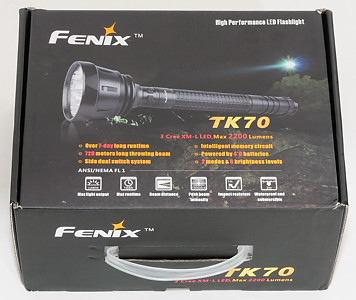
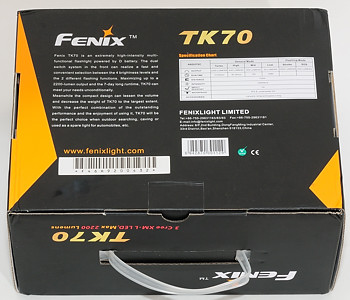
The light is delivered in a cardboard box with foam insert.
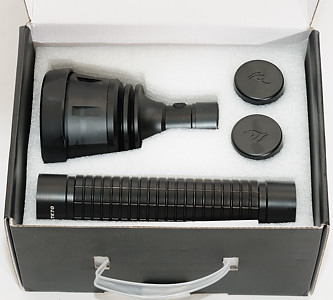
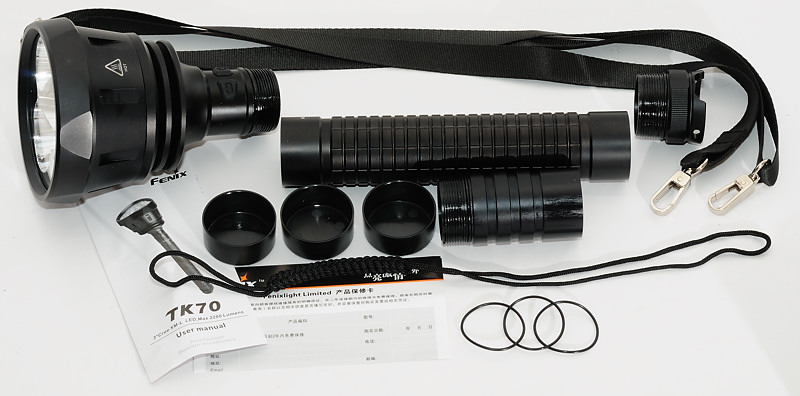
The box contains the light (head, 2xbody, tailcap), 3 extra o-rings, a lanyard, a shoulder strap, 3 caps for the head and battery tube, a manual and a warranty card. Note: The tube is in two parts, a 3 and a 1 D cell, they have to be used together because the light need 4 D cells to work.
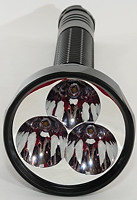

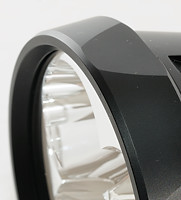
The light has a triple smooth reflector with a 3 XM-L led at the bottom. The sides of the bezel has some plain faces, this work as a anti roll device.
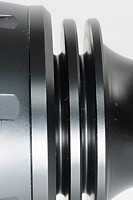
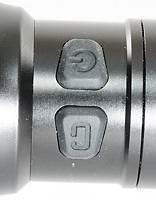
As usual on high power lights it has some cooling fins and just behind the fins are the switches. One switch is on/off and with a double click it will change between normal and flashing modes. The other switch is used to select brightness (low-medium-high-turbo) or flashing mode (sos-strobe), press on it to change brightness or flashing mode. The last selection of this switch is remembered and the light will start at the same setting next time it is turned on. Note: The light never starts in flashing modes, always in steady brightness modes.
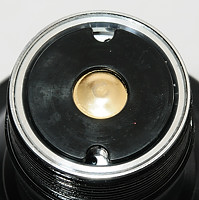
The battery connection in the head is recessed to provide mechanical polarity protection. There is a spring behind the center connection, i.e. the batteries will rest on the plastic ring with the body, not on the plus connection with the nipple.
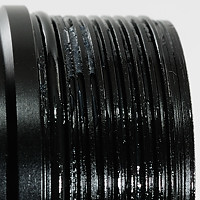
The head uses square cut threads for connection to the body. There is also a o-ring to seal the connection from water.
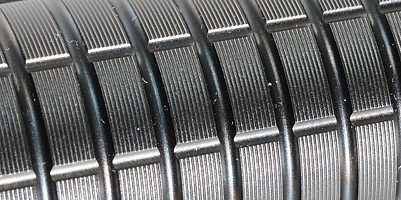
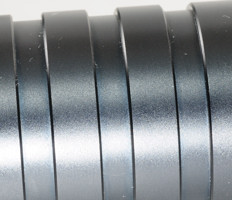
The body is cut with large rectangles to improve the grip, except the extender part.
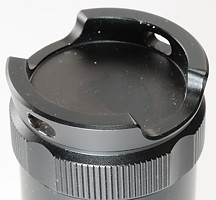
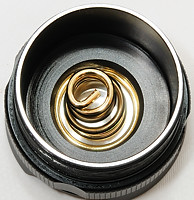
The tailcap is flat, i.e. the light can tail stand, but due to the length of the light it is not very safe. The tailcap has the usual spring for battery connection.
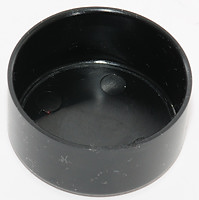
The light includes 3 caps that can be placed over the threads when the light is disassembled, but these caps does not have any type of lock and will only stay on if there is something external to hold them.

The light includes a lanyard and a shoulder strap, but I do not like the design. The strap is very thin and the light is missing a forward mounting point for the strap.
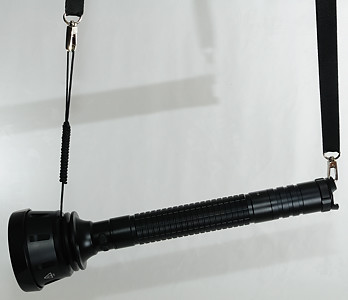
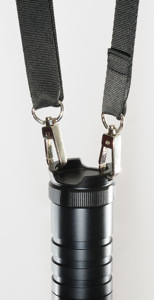
Here are some examples on how the shoulder strap can be mounted.

Here is all the part the light can be disassembled in without tools.
The TK70 is the brightest led light at the current time, it has not only a very high lumen output, but the 3 emitters are also focused very well, giving the light a good throw. I wonder why it has a two part body, when it can only work with 4 batteries and I do not like the shoulder strap, it is too thin and there is no mounting point on the head.
Looking at the price may explain the reason for the less than ideal solutions Fenix has used here, the light is cheap compared to other high power led lights, but it is the brightest of them.
Technical specification and measurements
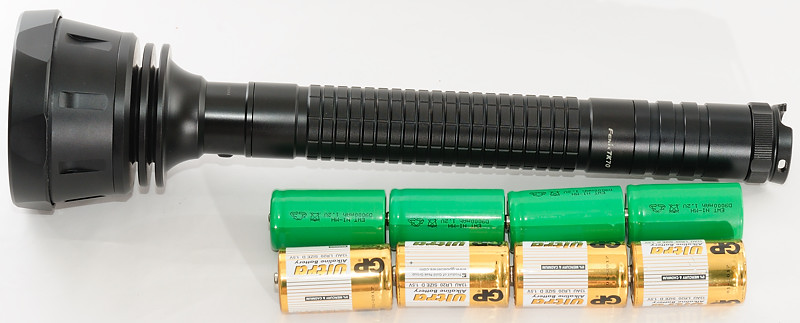
This light is designed for 4xD NiMH batteries and can work on 4xD Alkaline or 3xD batteries, but only at the lower power settings.
Measured size and weight:
Length: 404 mm
Diameter: 38.2 mmm to 106 mm
Weight: 1462 gram with NiMH batteries
The light uses a 3 x Cree XM-L led.

In the above table I have collected all modes, measured at 4.8 volt. I have also included off as a mode, because the light uses a small amount of power. All the estimated runtimes are with 9000mAh D batteries. The estimated lumen is scale from the specified maximum. The brightness is a relative measurement from a lux meter.
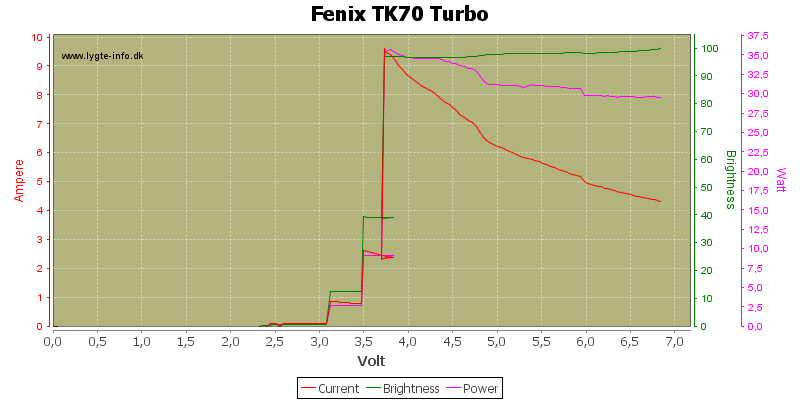
A voltage sweep at high shows a very nice stabilization. When the voltage goes down the light will automatic change to a lower mode. The light has a very high current consumption and there is some noise from the driver when running in turbo mode.
When the light steps down in brightness it will change the selected brightness, i.e. even if the light is turned off it will next time turn on at the current reduced brightness level, the switch must be used to increase brightness again.
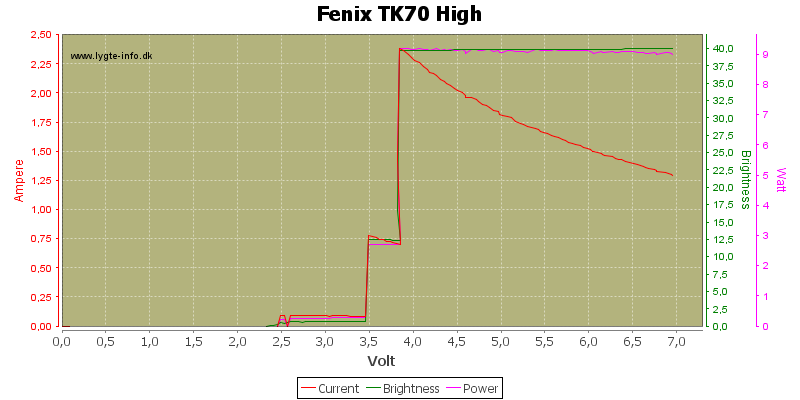
In high the light has perfect stabilization and uses considerable less current than in turbo.
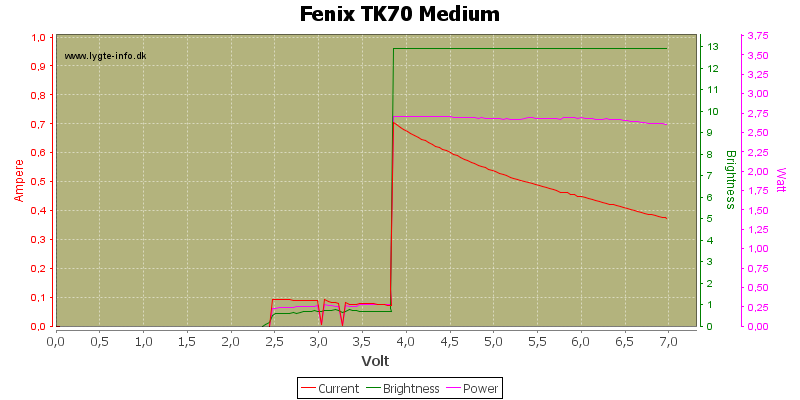
Again perfect stabilization, the two dip in current at 3 and 3.3 volt is the low battery warning (The light meter was to slow to register it).

Low does also have perfect stabilization and does also show the battery warning.
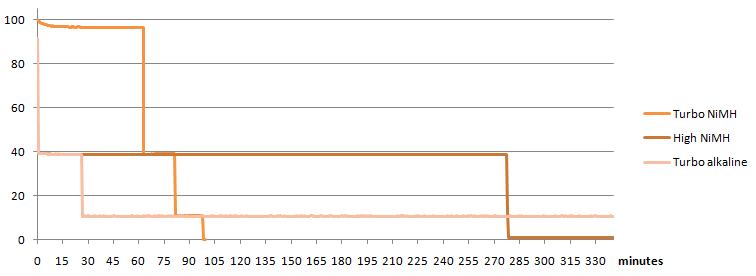
The good stabilization and automatic step down can also be seen in the runtime. With the alkaline I used (Panasonic) the runtime on turbo was less than one minute and after 26 minutes it drops down to medium. All runtimes where done with 4 cells, the light could not use turbo or high with 3 cells for any length of time.

The light has a dual frequency strobe with 6.8 and 15.4 hz, it changes between them each 1.8 second.

The sos uses a 0,37 second dot and it takes 11.8 second to transmit, there is a 2.5 second pause before next sos.
The light is current regulated and there is only a small amount of high frequency noise in the light.
Comparison to other Flashlights
Olight SR90, Olight SR91, Olight SR92
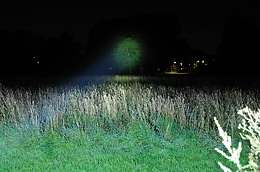
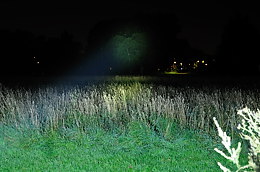
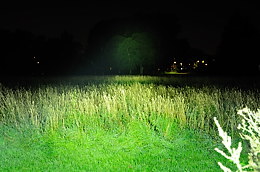
Fenix TK41, Fenix TK60, Fenix TK70:
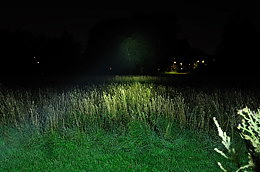
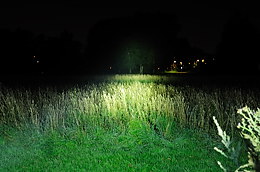
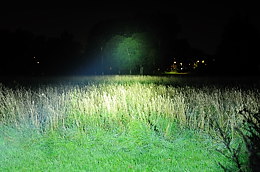
For the full comparison to other lights with graphs and beamshots see here






































